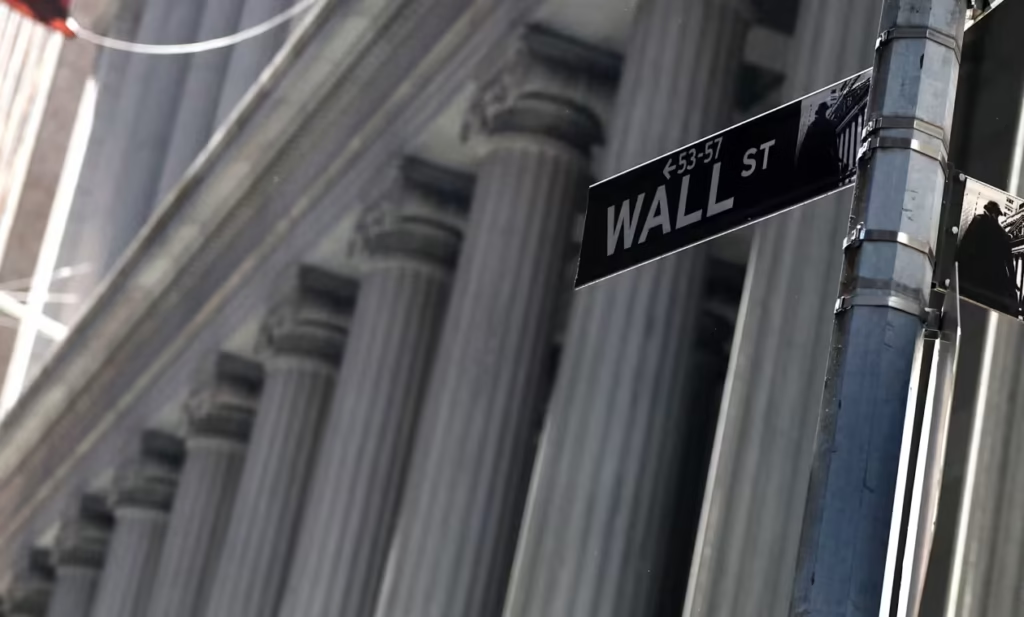After a successful week for Wall Street and ahead of fresh trade negotiations with China scheduled for Monday, U.S. stock futures fell on Sunday.
On Sunday evening, Dow Jones Industrial Average futures (YM00) fell about 60 points, or 0.1%. Nasdaq-100 futures (NQ00) and S&P 500 futures (ES00) fell by roughly 0.2%.
In the meantime, gold (GC00) declined while front-month crude oil prices (CL.1) remained unchanged. The U.S. Dollar Index DXY, which measures the value of the US dollar against a basket of six competing currencies, also experienced a modest decline as Bitcoin (BTCUSD) dropped below $106,000.
U.S. Trade Representative Jamieson Greer, Treasury Secretary Scott Bessent, and Commerce Secretary Howard Lutnick will meet with Chinese officials in London on Monday, according to President Donald Trump, who stated on Friday that the discussions “should go very well.”
“Markets, ever the dopamine junkies, are sniffing out the scent of détente,” SPI Asset Management managing partner Stepehn Innes wrote in a note on Sunday. No one is counting on a huge deal, so traders aren’t expecting a breakthrough. However, simply arriving to the table? A circuit breaker is what that is. The new “policy pivot” in today’s vibe-driven pricing action is “scheduled dialogue.”
Trump mentioned progress on U.S. access to China’s rare earth minerals during a conversation with Chinese President Xi Jinping last week. Both countries have accused the other of breaking the 90-day tariff moratorium, which has lately been put to the test.
However, this weekend’s skirmishes between demonstrators and police enforcement in Los Angeles may frighten investors, particularly after Trump ordered the deployment of up to 2,000 National Guard troops despite California Governor Gavin Newsom’s concerns. Authorities used tear gas on protesters opposing the Trump administration’s immigration raids on Sunday once more.
For the first time since February 21, the S&P 500 closed over the 6,000 mark on Friday. Experts view 6,000 as a crucial psychological threshold that can pave the way for a fresh record climb, and the index is only 2.3% below its record close of 6,115.15, achieved on February 19.
The Nasdaq Composite surged 1.2% on Friday, while the Dow Jones Industrial Average rose 1%, wiping out its 2025 losses. The Dow closed the week up 1.2%, the S&P 500 up 1.5%, and the tech-heavy Nasdaq up 2.2%, marking the second consecutive week that all three indexes ended the week up.
For the first time since February 21, all three of the major benchmarks ended Friday’s trading session in positive territory year-to-date, according to Dow Jones Market Data.
Part of the increases came from a better-than-expected May jobs report.
Trump once more urged Jerome Powell, the chair of the Federal Reserve, to lower interest rates on Friday. Although analysts predict two rate cuts this year, they are not anticipated until later in the year. The Fed’s rate-setting committee will meet again on June 17–18.
With the release of the consumer price index and producer price index, as well as quarterly earnings reports from companies like luxury furniture chain RH (RH), retailer Victoria’s Secret (VSCO), videogame retailer GameStop Corp. (GME), and IT behemoth Oracle Inc. (ORCL), investors will be examining May inflation figures this week.
Beginning Monday, Apple Inc. (AAPL) will also host its Worldwide Developers Conference, where investors will seek updates on the tech giant’s problematic rollout of AI features for the iPhone.





